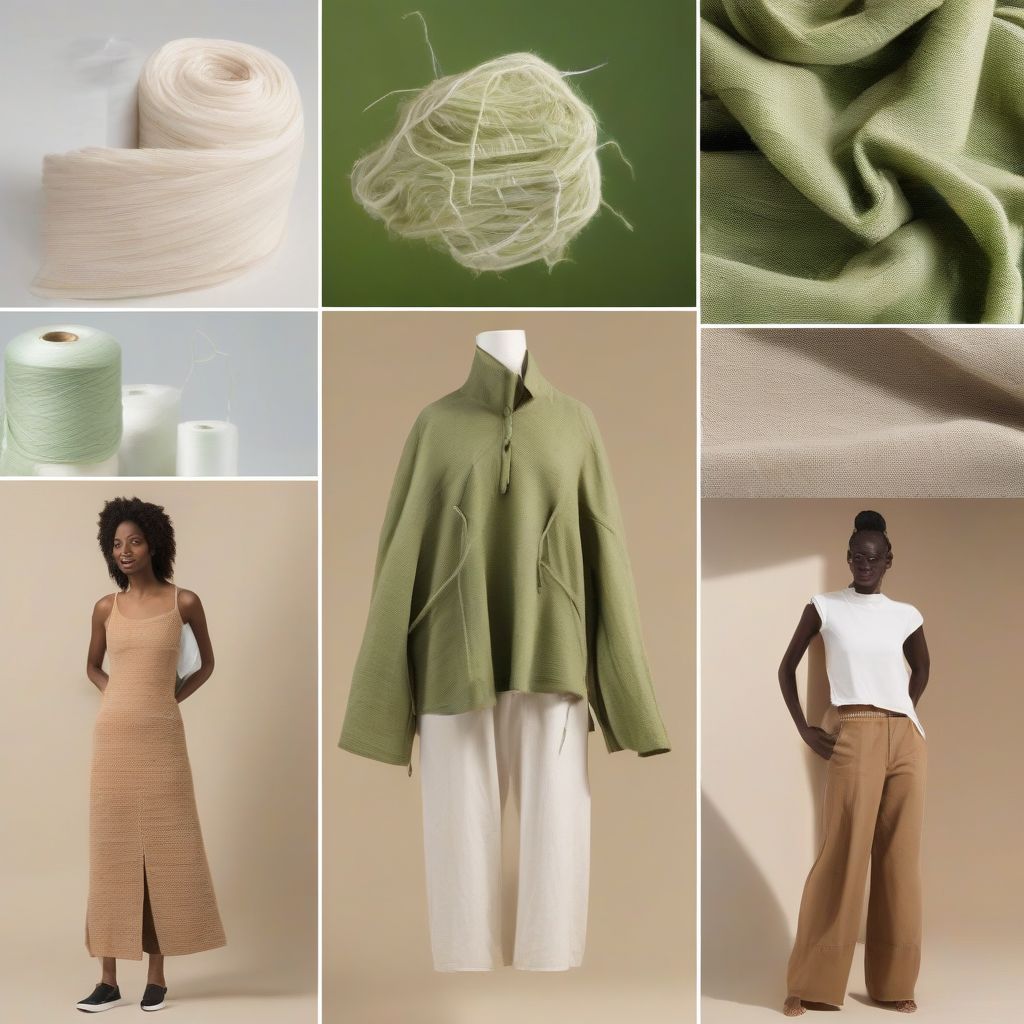Imagine a world where your wardrobe not only reflects your personal style but also aligns with your values. This is the promise of eco-friendly fabrics, a revolution quietly transforming the fashion industry from the inside out. As a nutritionist and meal prep coach, I understand the importance of making conscious choices for our well-being, and that extends to the clothes we wear. Let’s dive deep into how these innovative materials are reshaping the way we think about fashion and its impact on the planet.
The Urgent Need for Change: Fashion’s Environmental Footprint
The fashion industry, while glamorous on the surface, has a dark side: its environmental impact is staggering. From vast amounts of water used in textile production to harmful chemicals polluting waterways, the consequences are far-reaching.
- Water Consumption: Did you know it takes thousands of gallons of water to produce just one cotton t-shirt? Water scarcity is a growing global concern, and conventional cotton farming is a major contributor.
- Greenhouse Gas Emissions: The fashion industry accounts for a significant portion of global greenhouse gas emissions, further fueling climate change.
- Textile Waste: Fast fashion’s rapid cycle of trends leads to mountains of discarded clothing ending up in landfills, where they can take centuries to decompose.
Eco-Friendly Fabrics: A Sustainable Solution
Enter eco-friendly fabrics, a beacon of hope in an industry desperately in need of a makeover. These innovative materials are designed with sustainability in mind, minimizing their impact on the environment throughout their lifecycle. Here are some key players:
Organic Cotton: A Breath of Fresh Air
Organic cotton is grown without harmful pesticides and fertilizers, making it a healthier choice for both farmers and the environment. It also uses significantly less water than conventional cotton, alleviating pressure on this precious resource.
Recycled Materials: Giving New Life to Old Clothes
Recycled fabrics, made from pre-consumer and post-consumer waste, are gaining momentum. Think recycled polyester from plastic bottles or regenerated nylon from fishing nets. By giving new life to existing materials, we reduce waste and lessen the demand for virgin resources.
Hemp: A Versatile and Resilient Wonder
Hemp is a powerhouse crop that requires minimal water and pesticides to grow. Its durable fibers make it ideal for a wide range of clothing items, from shirts and pants to bags and shoes.
Tencel (Lyocell): A Natural and Biodegradable Option
Tencel, also known as Lyocell, is derived from sustainably harvested wood pulp. It’s known for its softness, breathability, and biodegradable nature, making it a favorite for eco-conscious brands.
 Eco-friendly fabrics: hemp, organic cotton, recycled plastic bottles
Eco-friendly fabrics: hemp, organic cotton, recycled plastic bottles
The Positive Ripple Effect of Eco-Friendly Fabrics
The adoption of eco-friendly fabrics goes beyond just reducing environmental impact; it sparks a positive ripple effect throughout the fashion industry and beyond:
- Supporting Ethical Labor Practices: Many sustainable brands prioritize ethical labor practices and fair wages for workers in their supply chains, promoting social responsibility alongside environmental consciousness.
- Encouraging Transparency and Traceability: The use of eco-friendly fabrics often goes hand in hand with greater transparency in the supply chain, allowing consumers to make more informed choices.
- Driving Innovation and Creativity: The search for sustainable solutions is fueling innovation in textile development, leading to exciting new materials and production methods.
Consumers as Changemakers: Embracing Sustainable Fashion Choices
As consumers, we hold immense power to influence the fashion industry. By choosing eco-friendly fabrics and supporting sustainable brands, we send a clear message that we demand better for ourselves and the planet.
Here are some ways to make a difference:
- Shop Mindfully: Invest in high-quality, durable pieces made from eco-friendly fabrics.
- Embrace Secondhand Fashion: Give pre-loved clothes a new home through thrifting, consignment shops, or clothing swaps.
- Support Sustainable Brands: Seek out brands that prioritize sustainability and transparency in their practices.
- Learn About Fabric Certifications: Look for certifications like GOTS (Global Organic Textile Standard) and OEKO-TEX, which ensure environmentally friendly and socially responsible production.
The Future of Fashion: Weaving a Sustainable Path Forward
The shift towards eco-friendly fabrics is not just a passing trend; it’s a fundamental shift in how we approach fashion. As more consumers embrace sustainability, the industry is responding with innovative materials, transparent practices, and a renewed commitment to ethical production.
You might also enjoy these articles on sustainable fashion:
By making conscious choices and supporting brands that align with our values, we can create a fashion industry that is both stylish and sustainable. Together, let’s weave a future where fashion and responsibility go hand in hand.
[amazon bestseller=”sustainable fashion”]
